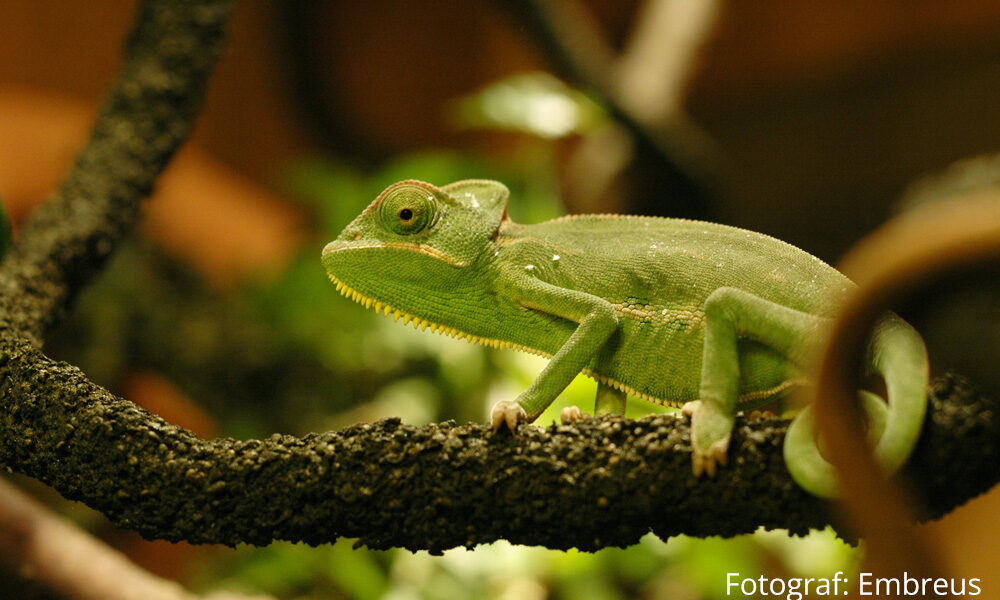Zoonotic potential of Yemen chameleons in Gran Canaria (Spain)
The Canary Islands are located northwest of Africa near the coast of Morocco. On Gran Canaria, the second largest island, around 290 of over 1000 plant and animal species have been introduced, i.e. species that do not originally occur there. Since at least 2017, there have been free-living Veiled chameleons (Chamaeleo calyptratus) on Gran Canaria. Spanish scientists have now investigated whether this introduced chameleon population could have zoonotic potential.
They examined 40 Veiled chameleons that had previously been caught and killed by Red de Alerta Temprana de Canarias para la Detección e Intervención de Especies Exóticas Invasoras in Arucas. 36 of the chameleons were adults, four were juveniles. Intestinal contents were taken from each chameleon and analysed for the presence of different bacteria using various methods.
At least one of the bacteria sought was found in 28 of the Veiled chameleons. About half of the chameleons had Yersinia enterocolitica, which is the highest prevalence ever recorded for this bacterium in reptiles. The bacterium can cause diarrhoea in humans, among other things. It is unclear how the Veiled chameleons became infected with it – possibly via insects. 16 of the Veiled chameleons had salmonella in their intestines. Salmonella is very common in reptiles and has even been found in endemic species on Gran Canaria. Pseudomonas is also frequently found in reptiles and was detected in the intestines of 13 animals. Two Veiled chameleons were infected with Campylobacter, in one of them Campylobacter lari could be identified. This bacterium can rarely cause illness in humans, but no pathogenic potential for humans is known for the species otherwise common in reptiles. Campylobacter lari has so far been detected mainly in seafood and birds – it is possible that the Veiled Chameleons picked up the bacterium on the coast and did not bring it with them. Three Veiled chameleons had Escherichia coli, which in rare cases can lead to haemolytic uraemic syndrome (HUS) in humans. Another two chameleons had Listeria monocytogenes in their intestines, which can be dangerous for pregnant women if ingested with food. Five Veiled Chameleons had mycobacteria, several of which were found to be non-tuberculous infections. Staphylococci were detected in seven chameleons, but they are part of the normal skin flora. However, five isolates were positive for resistance to certain antibiotics, which is becoming an increasing problem with Staphylococcus aureus in humans. Most recently, Vibrio was detected in a single Yemen chameleon, some species of which can cause diarrhoea in humans. The bacterium has previously been detected in introduced anoles on Tenerife.
The authors state that there is a zoonotic potential for humans due to the handling of introduced Veiled Chameleons on Gran Canaria. However, the extent to which there is a real risk for humans as well as endemic species needs to be further investigated.
Study of zoonotic pathogens in alien population of Veiled Chameleons (Chamaeleo calyptratus) in the Canary Islands (Spain)
Román Pino-Vera, Néstor Abreu-Acosta, Pilar Foronda
Animals 13 (14), 2023
DOI: 10.3390/ani13142288


